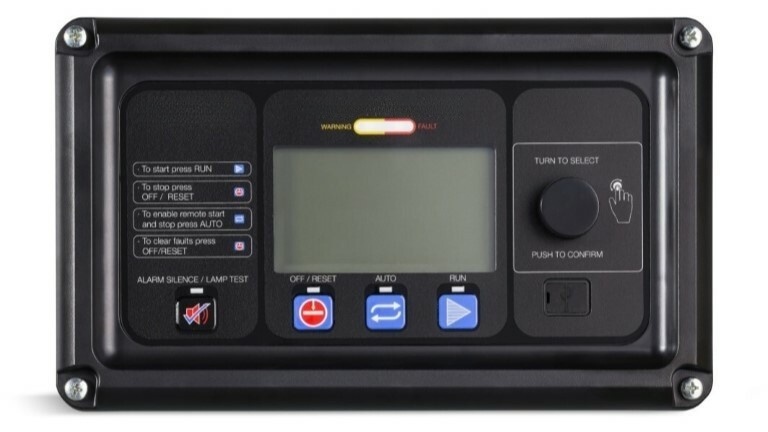Electronic control interface manufacturer
Find the perfect-fit solution for your interface’s design and manufacturing.
Nelson Miller Group (NMG) started developing control products in the late 1930’s and has remained an expert in the design and manufacturing of electronic control interfaces ever since. Customers enjoy our unparalleled engineering expertise to develop or refine complex designs, the manufacturing and assembly of products, and the end-to-end management supply chains.

What is a control interface?
A control interface is bi-directional, as it processes information both to and from the user. Innovation in materials, circuitry, touch technology, firmware, radio frequencies, sensors, haptics, and lighting contribute to the expansion of control interfaces across all industries (industrial, automotive, medical, commercial, etc.). By the same token, OEMs and electronic product innovators are demanding the integration of multiple systems and technologies in control interfaces to achieve improved efficiency, flexibility, functionality, and user experience.
The NMG difference in electronic control interface manufacturing
What separates NMG from contract manufacturers and EMS companies is our ability to offer in-country engineering and supply chain management services, highly specialized domestic manufacturing sites (membranes, printed circuitry, and advanced injection molding plastics), and a global network of over 200 vetted manufacturers that we manage with our teams on the ground. The manufacturing of your product benefits from the highest expertise in design and DFM, the safe access to global sourcing and technical abilities, and an unmatched level of customization. Our customers enjoy meaningful cost savings paired with high-quality output while loving the simplicity of working with just one point of contact and the reliability of a resilient supply chain.

"We measure everyone on the factors of risk, quality, innovation, delivery, and cost. Nelson Miller Group provides us with a customized solution at the whole enterprise level that encompasses all these factors. Their solution is not limited just to sourcing but also engages engineering and manufacturing in a more holistic way to understand how we manufacture and what our needs are. They are an independent supply chain solutions team that manages to bring value."
—VP of Electronics Global Sourcing for a multi-billion-dollar lighting company
What’s driving the growing need to integrate multiple systems and technologies?
The integration of various technologies in control interfaces is a dynamic and context-dependent process. As technology continues to advance and user expectations evolve, control interfaces must incorporate a mix of technologies to meet specific needs and optimize user experiences:
- User experience Requirements. The choice of technologies in a control interface often depends on the desired user experience. Touch screens are common in applications where users need intuitive and interactive controls, while physical buttons might be preferred in scenarios requiring tactile feedback.
- Industry standards and trends. Certain industries may have established standards or trends regarding the integration of specific technologies. For example, industries with a focus on user-friendly interfaces may adopt touch screens and advanced display technologies.
- Complexity of control operations. The complexity of control operations can influence the integration of technologies. In applications where users need to interact with a large number of parameters or functions, a combination of buttons, displays, and touch screens might be used for better usability.
- Safety and reliability requirements. Some industries, especially those involving critical processes or machinery, may prioritize reliability and safety. In such cases, a mix of physical buttons and redundant control methods may be integrated to ensure fail-safes and robust operation.
- Technological advancements. Advances in technology contribute to the integration of multiple technologies into control interfaces. For instance, the availability of high-resolution displays, capacitive touch screens, and energy-efficient LED lights enables more sophisticated and feature-rich interfaces.
- Customization and flexibility. Control interfaces are often designed to be flexible and customizable based on user preferences and specific applications. Manufacturers may offer a range of interface options, allowing users to choose the combination of technologies that best suits their needs.
- Cost considerations. The cost of integrating various technologies can impact the decision-making process. While touch screens and advanced displays offer modern features, they might be costlier than traditional buttons. The balance between functionality and cost is an essential consideration.
- Aesthetic and design considerations. The aesthetic design of a control interface is also a factor. Industries where the visual appeal of the interface is crucial, such as consumer electronics or automotive applications, may lean towards integrating sleek touch screens and LED lighting for a modern look.
- Rapid technological evolution. The rapid evolution of technology often drives the integration of multiple features. For example, the increasing availability of touch-sensitive displays with multitouch capabilities has led to their widespread adoption in various control interfaces.
- Application-specific requirements. Different applications have unique requirements: A control interface in a medical device might integrate touch screens for hygiene reasons, while an industrial control panel might use durable physical buttons for heavy-duty operations.
Your needs might be to reduce manual labor, facilitate diverse operations from a central device, improve decision-making, deliver more information and feedback to the end user, facilitate smoother transactions, increase response times, personalize services, and/or improve safety. Integrated solutions allow you to stay competitive, enhance your operational capabilities, and deliver better overall experiences to customers.



Key factors to consider when choosing your control interface manufacturer
Selecting the right partner to design and produce your control interface is a crucial decision for any OEM. The success of your final product, its performance, and its market competitiveness depend significantly on the capabilities and qualities of the chosen manufacturing partner.
- Expertise and experience. Look for a partner with a proven track record in designing and producing control interfaces or similar electronic devices. Experience in your specific industry or domain is valuable, as it demonstrates a deeper understanding of your unique requirements and challenges.
- Technical competence. Assess your partner’s technical capabilities, including expertise in hardware and software development, interface design, embedded systems, and connectivity protocols. A manufacturer with a strong technical foundation is better equipped to deliver a reliable and innovative control interface.
- Quality standards and certifications. Ensure that the manufacturer adheres to industry-standard quality control processes and holds relevant certifications. ISO certifications and adherence to quality standards demonstrate a commitment to delivering products that meet or exceed established benchmarks.
- Customization and flexibility. Evaluate the manufacturer's ability to customize solutions based on your specific requirements. A flexible manufacturer can adapt to your unique needs, ensuring that the commercial control interface aligns with your product specifications and business objectives.
- Prototyping and testing capabilities. A manufacturer with strong prototyping and testing capabilities can help refine the design and identify potential issues early in the development process. The testing process should be thorough and cover various aspects, including functionality, usability, reliability, performance, and safety in real-world conditions.
- Integration of hardware and firmware. The integration of hardware and software in panel control involves a combination of specialized technologies, protocols, and systems. You need a partner who can help you sort through and select among the many existing solutions to facilitate this integration.
- Supply chain management. Assess the manufacturer's supply chain capabilities, including sourcing of components, inventory management, and production planning. A robust supply chain is essential for timely and cost-effective production, minimizing the risk of delays and disruptions.
- Cost considerations. While cost is a crucial factor, it's essential to strike a balance between affordability and quality. The right partner helps you navigate potential compromises on materials, production processes, or testing procedures impacting the reliability and performance of your final product.
- Communication and collaboration. Effective communication and collaboration are vital for a successful partnership. Choose a manufacturer that values clear communication, provides regular updates, and is open to collaboration throughout the design and production phases.
- Regulatory compliance. Ensure that the manufacturer is well-versed in regulatory requirements and compliance standards relevant to your product and/or industry. Compliance with regulations ensures that the commercial control interface meets safety and legal requirements.
- Lifecycle support. Consider the manufacturer's commitment to providing ongoing support, including maintenance, updates, and potential future iterations of the control interface. A manufacturer that offers comprehensive lifecycle support can contribute to the long-term success of your product.
Finally, don’t forget to seek references from other clients who have worked with the manufacturing partner.
Find the perfect-fit manufacturing solution with NMG.
There are hundreds of different plastic resins, four common types of touch screen technologies, endless options within these, a multitude of manufacturing processes, software, and standards, etc. Your product may be as small as a few inches or many feet high/wide. You may need hundreds, thousands, or millions of units. With so many variables, it’s impossible to expect that one single contract manufacturer can reasonably and efficiently deliver your ready-for-market control interface. However, a partner like NMG is not limited by geography, a single source, or a specific factory. NMG and its partners offer incredible breadth of expertise, equipment, experience, and capabilities to drive innovation and truly make the impossible possible.
Rely on our professionals to orchestrate the services for a smooth, reliable, less complex program while enabling cost savings.

Ready to start a project today?
Case studies
See real-world examples of how NMG has helped customers across the full spectrum of the supply chain, from design to delivery.
Read our blog!
Access industry updates, helpful how-tos, engaging infographics, and other resources for engineers and supply chain professionals on the NMG Blog.
Get in touch!
We can’t wait to create winning solutions with you.
For general inquiries, please fill out this form and our team will be in touch shortly.




